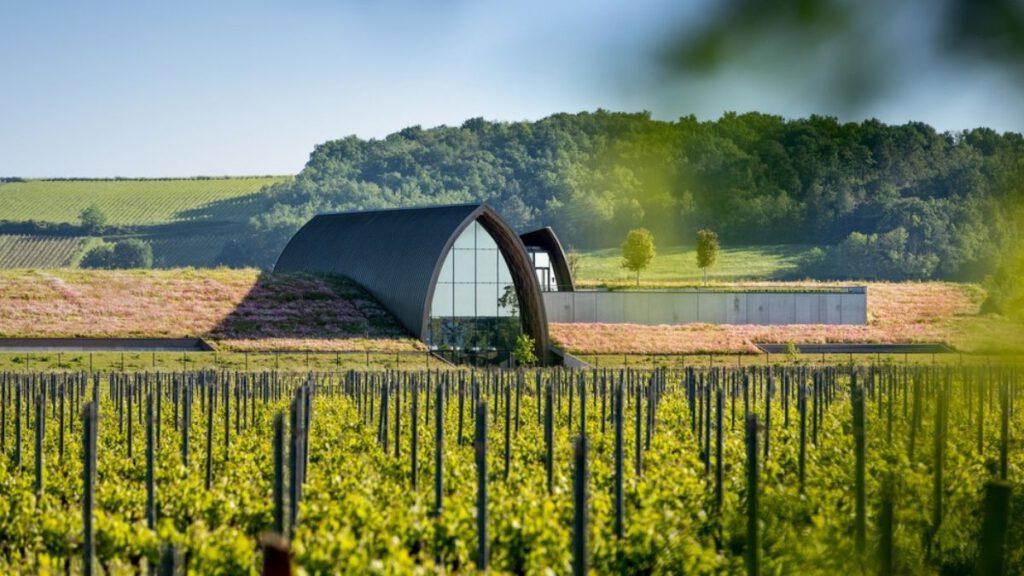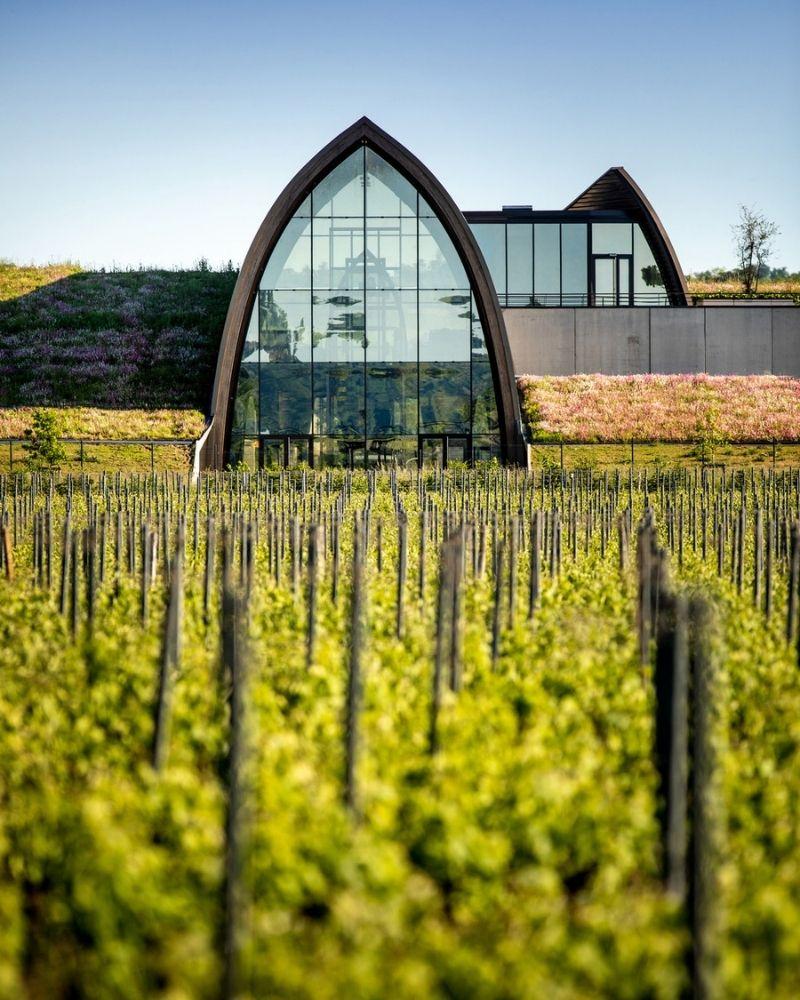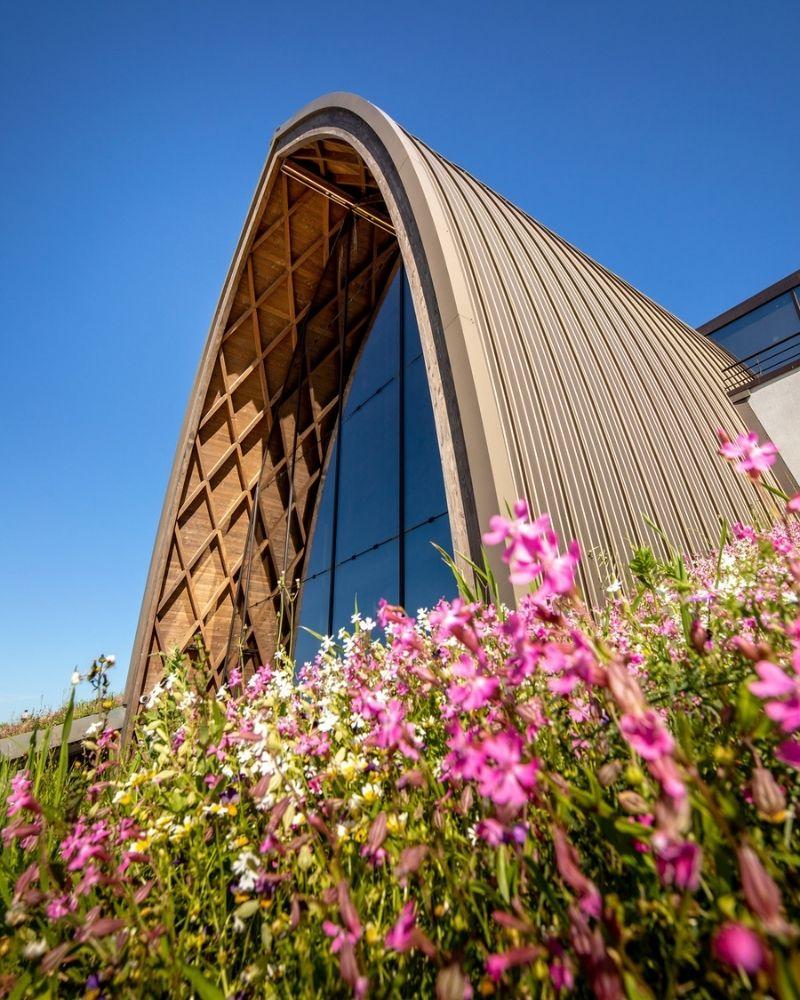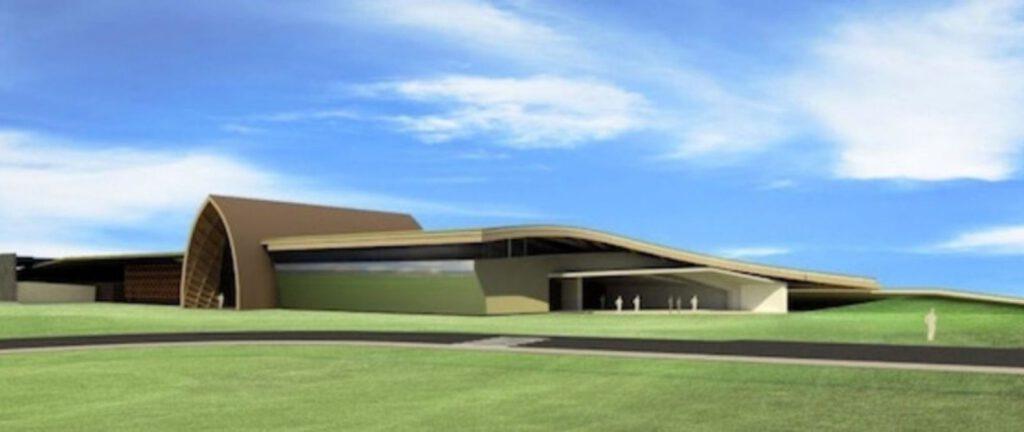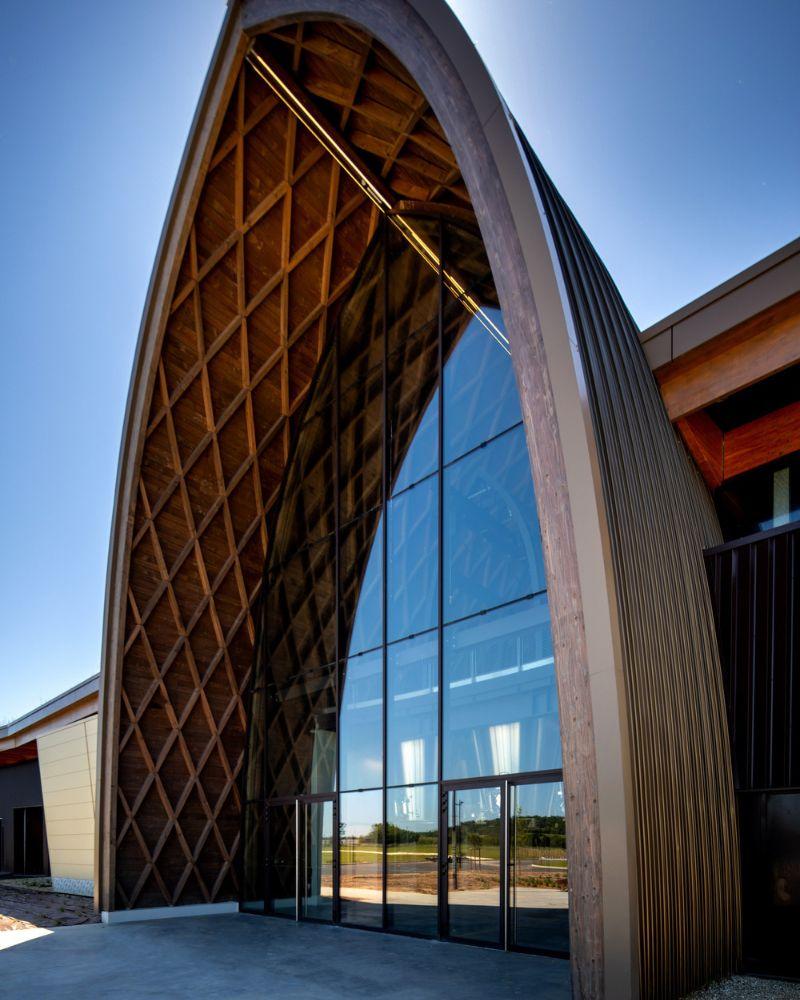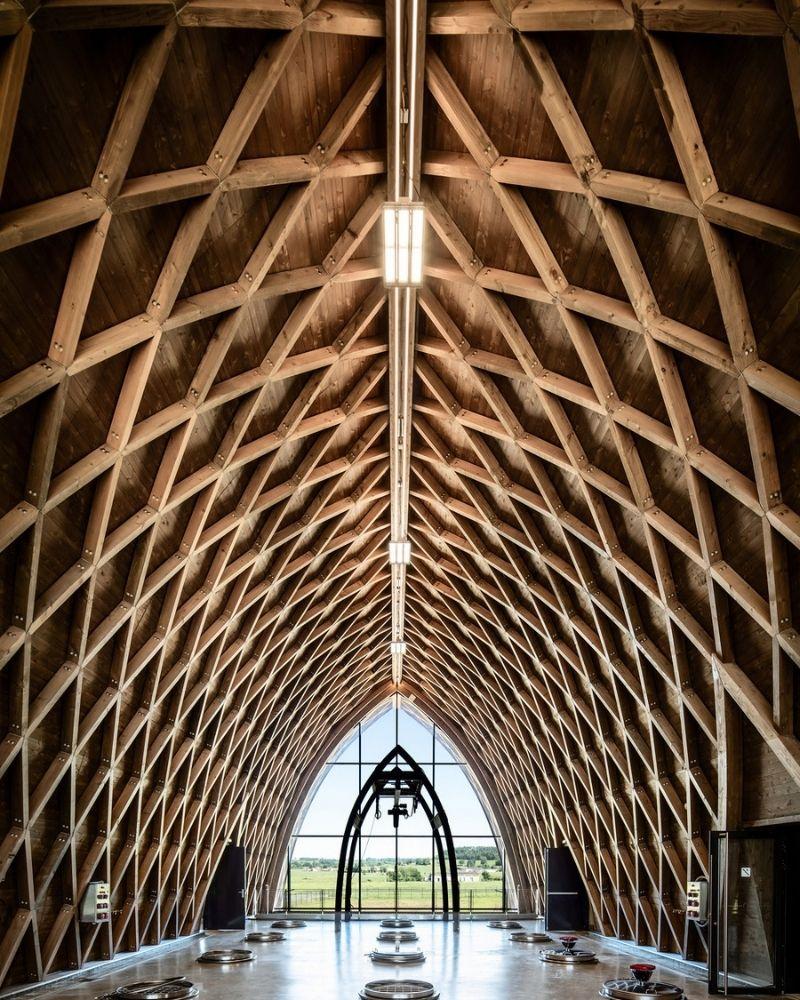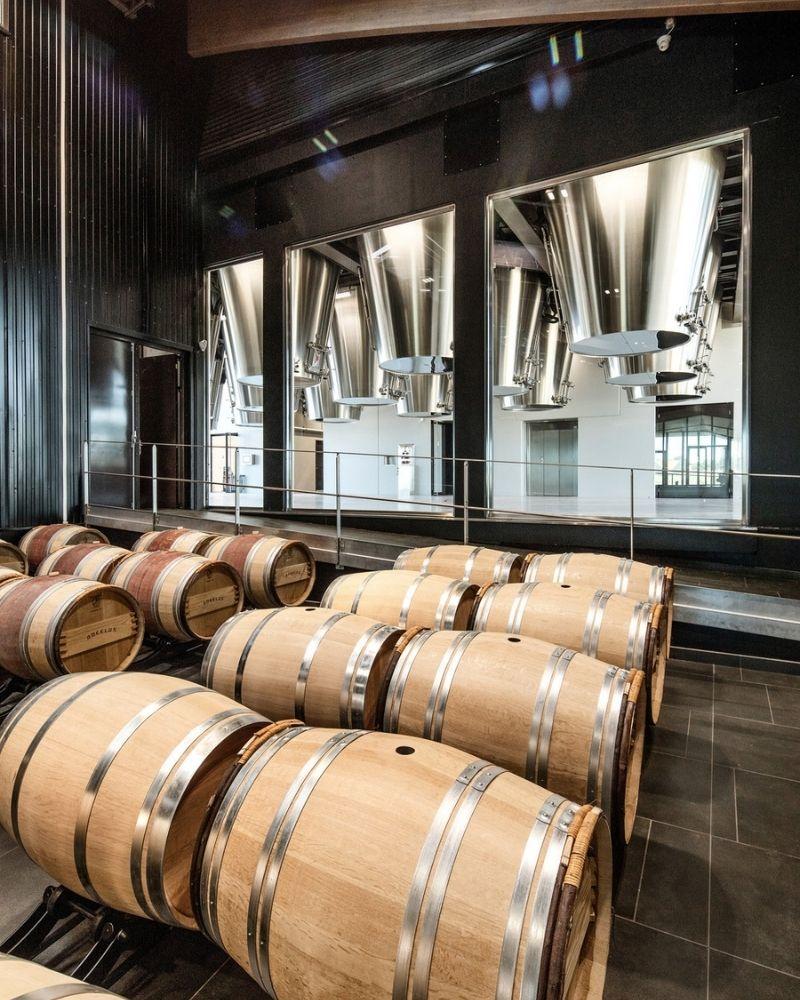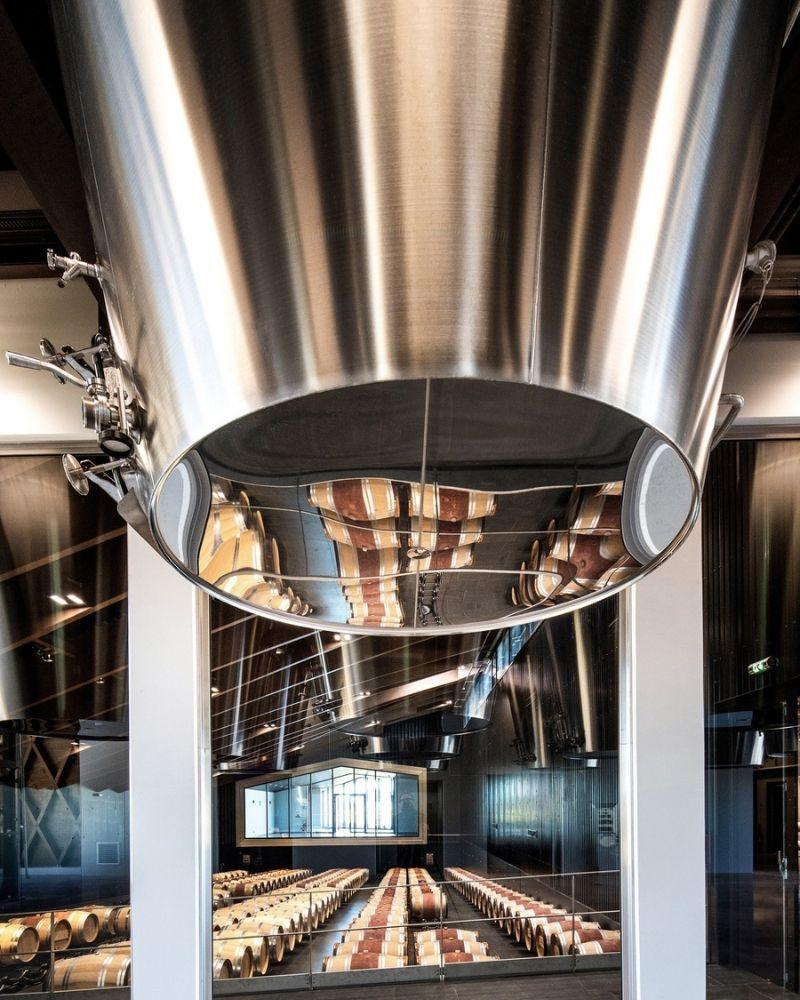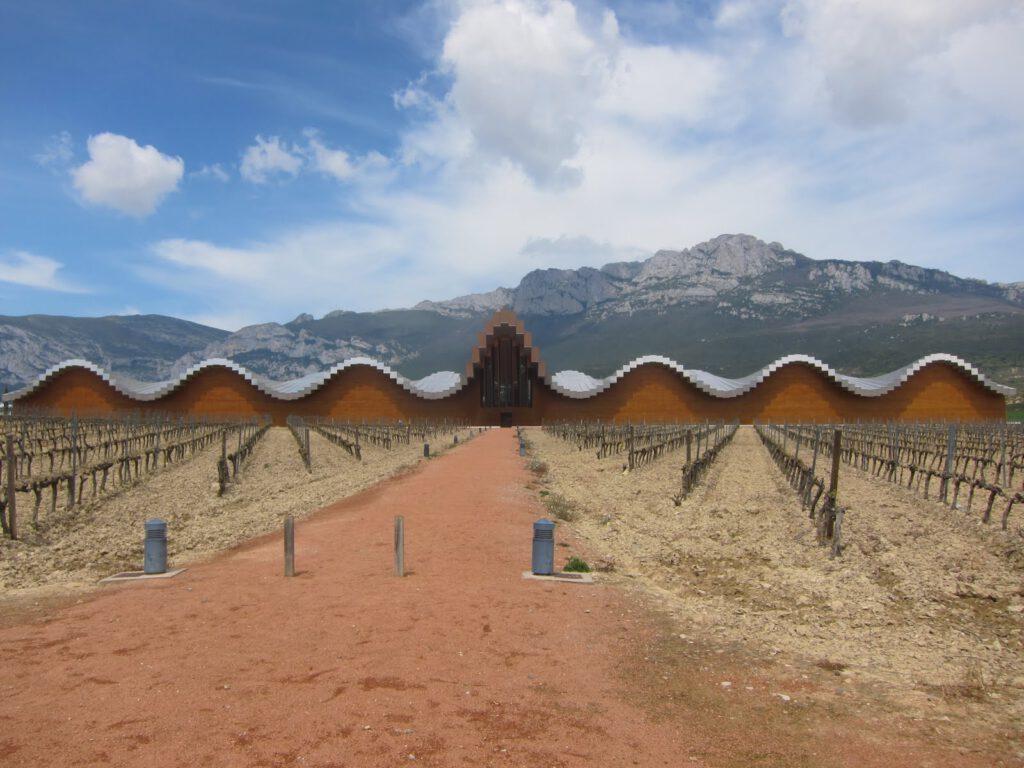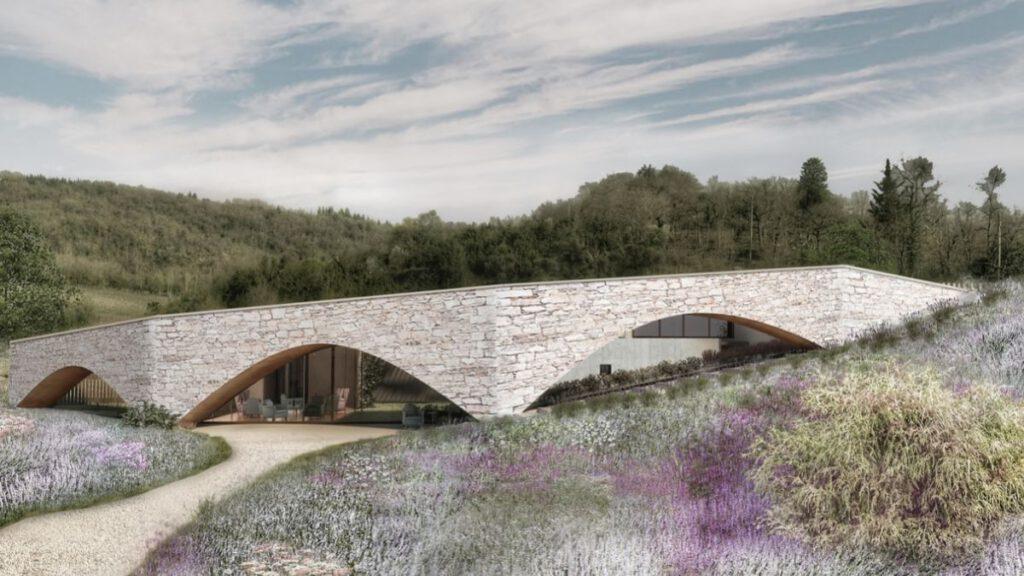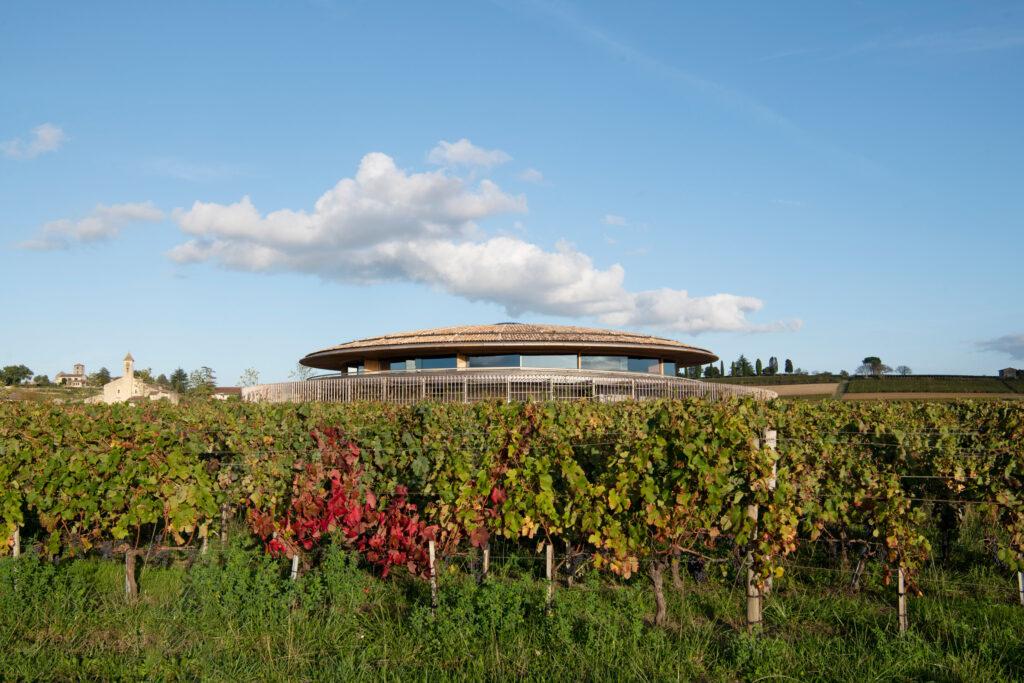Inspired design for heavenly wines
The fine wines from Château Angélus winery are now also produced in Libourne, France. Its new wine cellar designed by Eric Castagnotto looks like a church nave, which is probably no coincidence.
Château Angélus has a new winery, designed by French architect Eric Castagnotto. The BREEAM-certified building resembles a church nave, providing a dignified setting for its delectable, multi award-winning products.
Situated in the French wine-growing region of Bordeaux, the new wine cellar in Libourne produces such wines as Carillon d’Angélus and also the latest offering from Château Angélus, Tempo d’Angélus.
An old saying goes: “He who drinks wine sins, he who enjoys wine prays”. And so you could consider it a reverential process to produce these fine wines, especially given the longstanding, fruitful connection between viniculture and the church, as evidenced in the names of many vineyards.
A winery resembling a church nave
Even the name of the winery, now being run by the eighth generation of the de Boüard-Rivoal family, reveals its ecclesiastical connections: it reflects the winery’s proximity to three local churches. The Angelus, or “Angel of the Lord”, is an ancient Catholic devotion.
It is likely that architect Eric Castagnotto took all these associations into consideration when planning the new winery – because it does actually look a bit like a church nave.
The old Carillon d’Angélus winery, located on the traditional estate in Saint-Emilion, had become too cramped. The possibilities for constructing new, more efficient and innovative facilities within the UNESCO World Heritage site were limited, however.
Suitable for prototyping
As a result of these architectural constraints, they began searching for a suitable piece of land on which to build a completely new facility from scratch.
The new winery covers an area of 4,400 square metres within a 3.3-hectare plot of land. And it’s equipped with everything necessary to make great wines: grape weighbridge with optical sorting, cellars for malolactic fermentation and maturation, and bottling and labelling equipment.
An energy self-sufficient winery
The modern nitrogen generator helps prevent unwanted oxidation during vinification and maturation. According to Château Angélus, the new winery is also ideally equipped for testing new prototypes, thanks to apparatus such as electronic must analysers.
Some of the electricity needed to operate the new facility is generated using photovoltaic panels. The building is certified according to the UK BREEAM (Building Research Establishment Environmental Assessment Method) standard.
Spectacular winery architecture as a marketing tool
New winemaking methods call for corresponding wineries, including showrooms and tasting rooms. In recent years, it has become highly fashionable to commission renowned architects or announce architectural competitions when undertaking conversions or building new facilities. Doing so allows wineries to benefit from creative and innovative solutions while attracting international attention. In addition, interesting winery architecture is a great marketing and wine tourism tool.
Even big names like Spanish star architect Santiago Calatrava are involved in this trend. He is responsible for Bodegas Ysios, completed in 2001 and situated at the foot of the Laguardia mountain region. The roof structure is composed of massive aluminium rods that harmonise with the surrounding natural environment. And the main part of the building, made of copper-coloured varnished cedarwood, alludes to the huge wine barrels.
A vast structure featuring a spectacular staircase, the Beronia winery in Ollauri in the La Rioja region of Spain was designed by IDOM.
In Austria, too, you can find innovative winery architecture that bears the signature of international star architects: such as the recently completed extension to the Loisium designed by Steven Holl Architects.
Facade follows topography
At the winery in Chianti, Italy, designed by the architects at IB Studio, the main facade harmonises with the unique topography of the place: an arched stone wall reflects the contours and structure of the ground and the hills. Visitors can view the surrounding landscape from different perspectives via various paths, all of which lead to a hidden garden with the glass pavilion for tasting and sales.
Influential British architect Norman Foster took on the job of designing Jonathan Maltus’s Le Dôme winery. Located in Bordeaux, visitors approach the winery via a tree-lined avenue. At the end sits the circular building with its two ramps: the outer ramp emphasises the connection to the terrain, while the inner one allows visitors to journey through the various stages of winemaking.
Both ramps lead to an upper-level gallery, which serves as the building’s social hub with tasting tables, an elegant wine bar and multimedia rooms. From there, visitors have a 360-degree view of the surrounding vineyards.
The Malibu Rocky Oaks Estate Vineyards, designed by architect Bob Easton, are almost beyond belief: situated near the Santa Monica Mountains in the US, this Tuscan-style wine estate has a lot to offer: helipad, infinity pool, naturally the vineyard, plus an impressive panoramic view across the rolling hills and down to the sea.
Text: Linda Benkö
Photos: Deepix / v2com, IB Studio / Arch. Invernizzi & Bonzanigo, Art Anderson / wikimedia, Nigel Young / Foster + Partners
